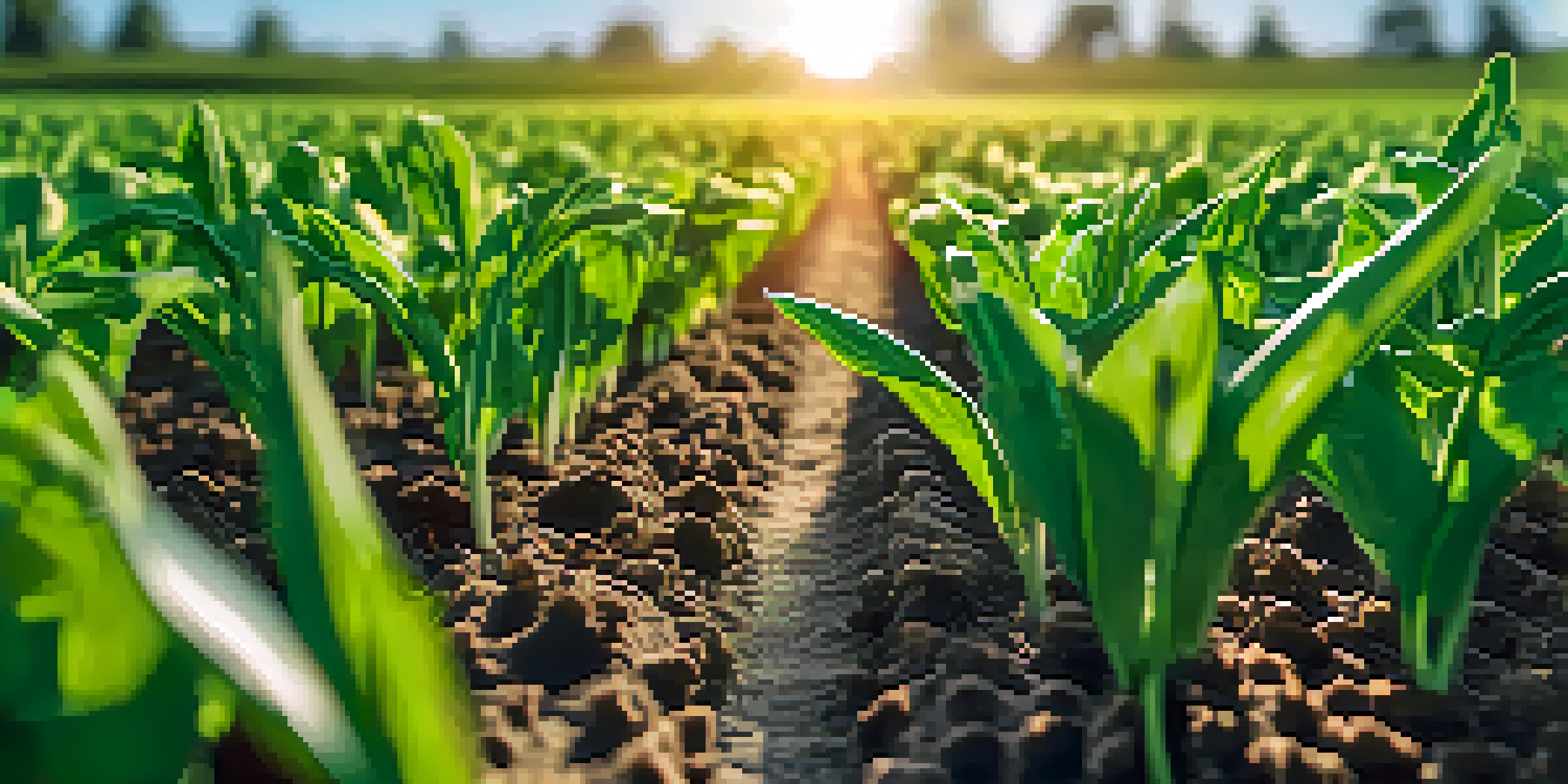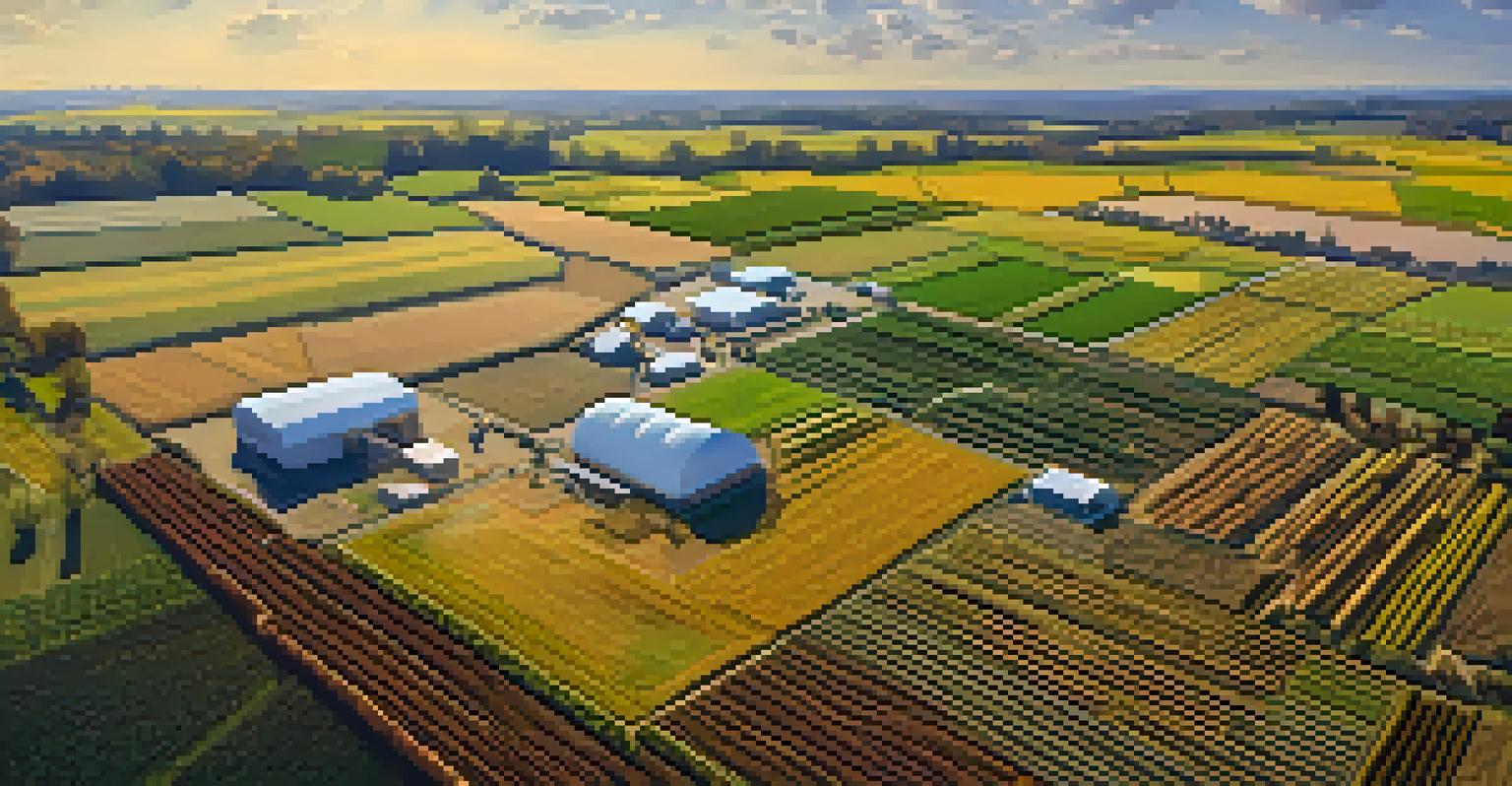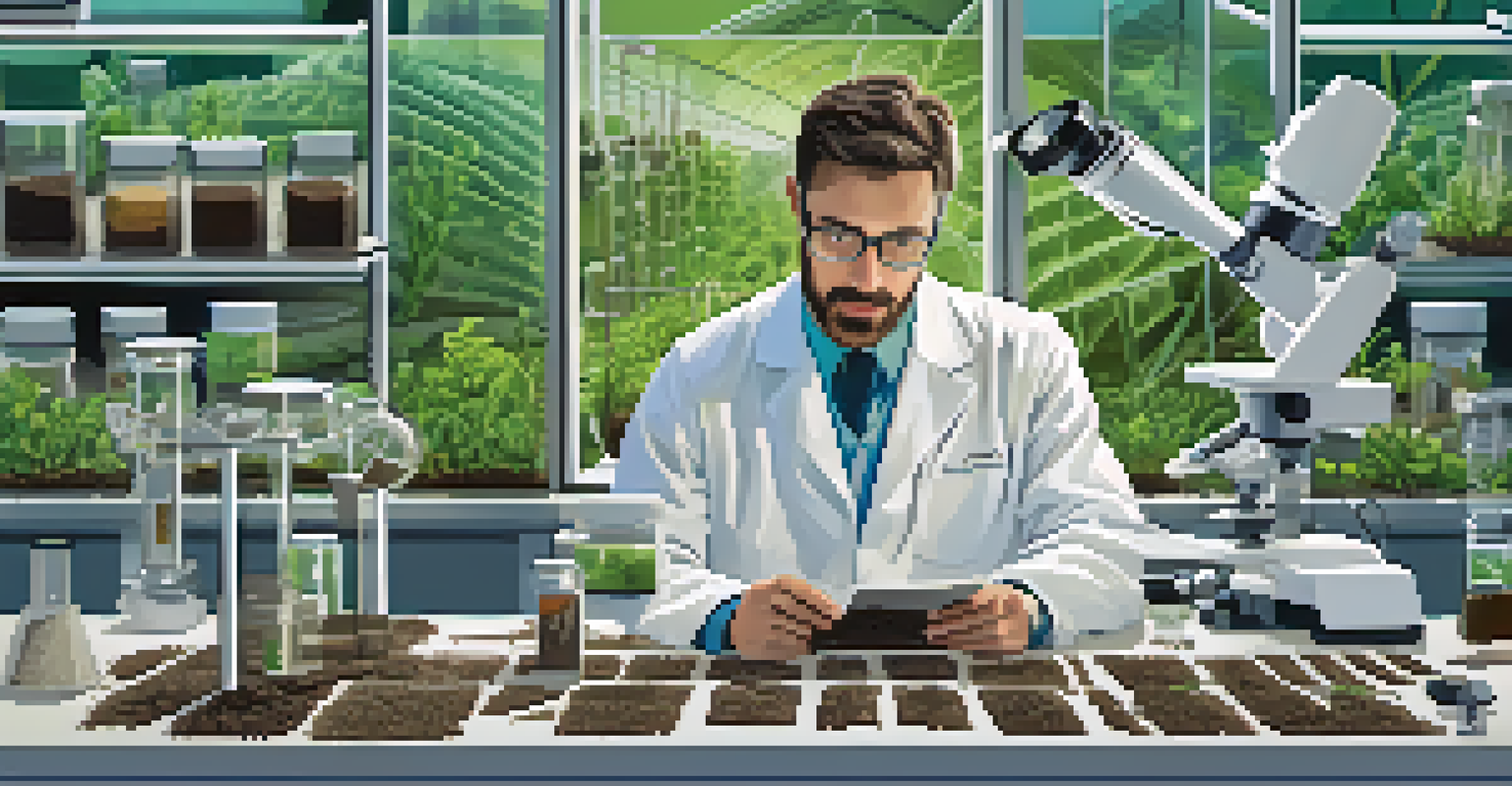Utilizing Nanotechnology to Enhance Plant Growth and Health

Understanding Nanotechnology in Agriculture
Nanotechnology refers to the manipulation of matter at the atomic and molecular scale, often at sizes between 1 and 100 nanometers. In agriculture, this technology holds immense potential to enhance plant growth and health by improving nutrient delivery and pest management. By utilizing nanoparticles, researchers can create more effective fertilizers and pesticides that are less harmful to the environment.
Nanotechnology is the future of agriculture, promising to enhance food security while minimizing environmental impacts.
For instance, traditional fertilizers can often lead to nutrient runoff, harming nearby ecosystems. However, with nanotechnology, nutrients can be encapsulated in tiny particles that release them slowly over time, ensuring plants receive what they need without excess wastage. This not only promotes healthier plant growth but also minimizes environmental impact.
Moreover, nanotechnology can enhance the plant's own defenses against pests and diseases. By integrating nanoparticles into plant tissues, scientists can improve resilience, making crops more robust against environmental stresses, which is vital in our changing climate.
Enhancing Nutrient Absorption through Nanoparticles
One of the exciting applications of nanotechnology is its ability to improve nutrient absorption in plants. Conventional fertilizers often struggle to penetrate plant roots effectively, which can limit their benefits. However, nanoparticles can be designed to optimize this process, allowing for better uptake and utilization of essential nutrients.

For example, researchers have developed nanofertilizers that release nutrients in a controlled manner, aligning with the plant's growth cycles. This targeted delivery system ensures that plants receive nutrients when they need them most, leading to enhanced growth rates and reduced fertilizer usage.
Nanotechnology Boosts Plant Health
Nanotechnology enhances nutrient delivery and pest management, improving plant growth while minimizing environmental impact.
Additionally, these nanoparticles can also help in breaking down soil compaction, improving aeration and water retention. This means healthier root systems that can draw in more nutrients and moisture, ultimately promoting stronger and more resilient plants.
Nanotechnology in Pest and Disease Management
Pest and disease management remains a significant challenge in agriculture, often requiring the use of chemical treatments that can be harmful to the environment. Nanotechnology offers innovative solutions to these challenges, providing targeted approaches to combat pests and diseases without the side effects of conventional pesticides.
The use of nanotechnology in farming can lead to more sustainable practices, ensuring that we can feed the growing population without compromising the health of our planet.
Nanoparticles can be engineered to deliver pesticides precisely where they are needed, reducing the amount of chemicals released into the environment. For instance, by encapsulating pesticides in nanoparticles, they can be absorbed more effectively by plants while minimizing exposure to non-target species, including beneficial insects.
Furthermore, nanotechnology can enhance the effectiveness of biological control agents, such as beneficial microbes. By using nanoparticles to protect these agents from harsh environmental conditions, farmers can ensure that they remain viable and effective for longer periods, leading to healthier crops.
The Role of Nanotechnology in Soil Health
Healthy soil is the foundation of successful agriculture, and nanotechnology can play a critical role in maintaining and enhancing soil health. Nanoparticles can improve soil structure, enhancing its ability to retain moisture and nutrients. This is crucial, especially in areas prone to drought or where soil degradation is common.
For example, certain nanomaterials can help to promote beneficial microbial activity within the soil, which is essential for nutrient cycling. By fostering a thriving ecosystem in the soil, plants can access the nutrients they need more efficiently, leading to improved growth and resilience.
Improved Soil Health with Nanoparticles
Nanoparticles can enhance soil structure and microbial activity, promoting better nutrient retention and overall soil vitality.
Moreover, nanotechnology can assist in soil remediation efforts, helping to clean up contaminated soils by breaking down harmful pollutants at the nanoscale. This not only revitalizes the soil but also ensures a healthier environment for future crops.
Real-World Applications of Nanotechnology in Farming
Across the globe, farmers are beginning to harness the power of nanotechnology to boost productivity and sustainability. For example, in precision agriculture, drones equipped with nanotechnology can monitor crop health in real-time, allowing for timely interventions. This not only saves resources but also maximizes yields.
In countries facing food security challenges, such as parts of Africa and Asia, nanotechnology is being used to develop drought-resistant crops. These innovations offer hope for farmers struggling with changing climate conditions, ensuring that they can still produce food despite adverse weather.
Additionally, collaborations between researchers and agricultural companies are leading to the commercialization of nanotechnology-based products, making them accessible to farmers. As awareness grows, so does the potential for these innovations to transform agriculture on a larger scale.
Challenges and Considerations in Nanotechnology
While the benefits of nanotechnology in agriculture are promising, there are also challenges and considerations that need to be addressed. One major concern is the potential impact on human health and the environment. As with any new technology, understanding the long-term effects of nanomaterials on ecosystems is crucial.
Regulatory frameworks are still evolving to keep pace with these advancements, which can create uncertainty for farmers and developers alike. Clear guidelines and testing protocols are necessary to ensure that nanotechnology products are safe and effective before they reach the market.
Challenges of Nanotech in Agriculture
Despite its benefits, the adoption of nanotechnology faces challenges, including potential health impacts and the need for proper regulations.
Moreover, educating farmers about the benefits and risks of nanotechnology is essential for successful adoption. Providing training and resources can help them make informed decisions about integrating these innovations into their farming practices.
The Future of Nanotechnology in Agriculture
As research into nanotechnology continues to evolve, the future looks bright for its application in agriculture. Innovations are being developed that not only enhance plant growth but also promote sustainability, making farming more resilient to climate change. This holistic approach is essential for feeding a growing global population.
Furthermore, as we gain a better understanding of plant-nanoparticle interactions, we can expect even more tailored solutions for specific crops and conditions. This personalized approach could revolutionize how we manage agriculture, leading to more efficient practices that consider local environments.

Ultimately, the integration of nanotechnology into agriculture could lead to a new era of farming—one that balances productivity with environmental stewardship. It’s an exciting time for researchers, farmers, and consumers alike as we explore the possibilities that this technology holds.